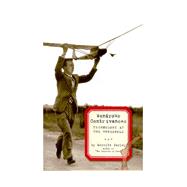
| Acknowledgments | p. viii |
| Prologue | p. 1 |
| Transportation | |
| Annihilating Time and Space: The Railroads | p. 17 |
| Traveling, Not Being Traveled: The Bicycle | p. 33 |
| Love at First Sight: The Automobile | p. 44 |
| Looking Heavenward: Air Travel | p. 66 |
| Communications | |
| The Truly Astonishing Contrivance: The Telegraph | p. 94 |
| The First Communications Highway: The Telephone | p. 110 |
| A New Necessity of Civilization: The Typewriter | p. 131 |
| "You Should Get One": The Copying Machine | p. 143 |
| Dropping on Target: The Fax Machine | p. 153 |
| Doing What Came Naturally: The Home Computer | p. 157 |
| Entertainment | |
| A Succession of Wonders: Home Entertainment | p. 191 |
| Where's The Band?: The Phonograph | p. 202 |
| The Craze That Stayed: Photography | p. 214 |
| The Wildfire Wonder: Radio | p. 226 |
| Adding Sight to Sound: Television | p. 246 |
| Epilogue | p. 262 |
| Source Notes | p. 264 |
| Bibliography | p. 283 |
| Index | p. 295 |
| Table of Contents provided by Syndetics. All Rights Reserved. |
The New copy of this book will include any supplemental materials advertised. Please check the title of the book to determine if it should include any access cards, study guides, lab manuals, CDs, etc.
The Used, Rental and eBook copies of this book are not guaranteed to include any supplemental materials. Typically, only the book itself is included. This is true even if the title states it includes any access cards, study guides, lab manuals, CDs, etc.
Excerpted from Wondrous Contrivances: Technology at the Threshold by Merritt Ierley
All rights reserved by the original copyright owners. Excerpts are provided for display purposes only and may not be reproduced, reprinted or distributed without the written permission of the publisher.